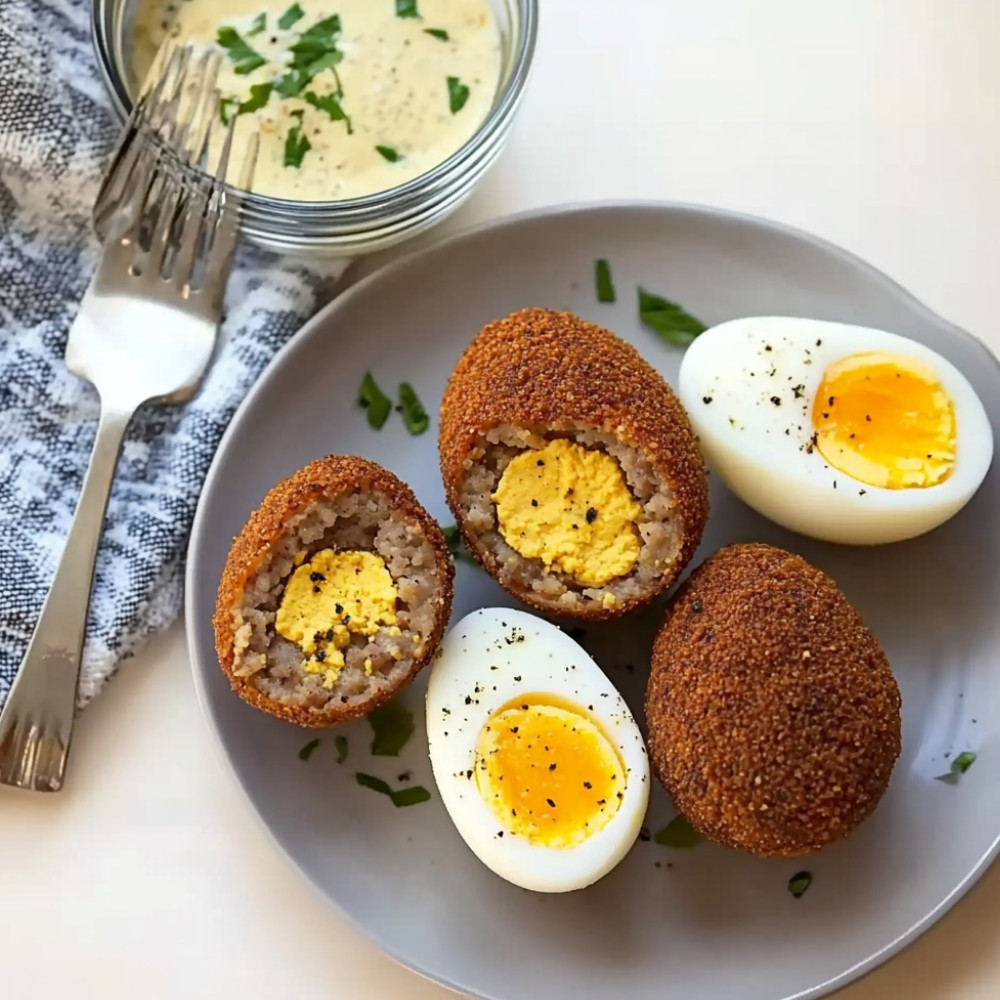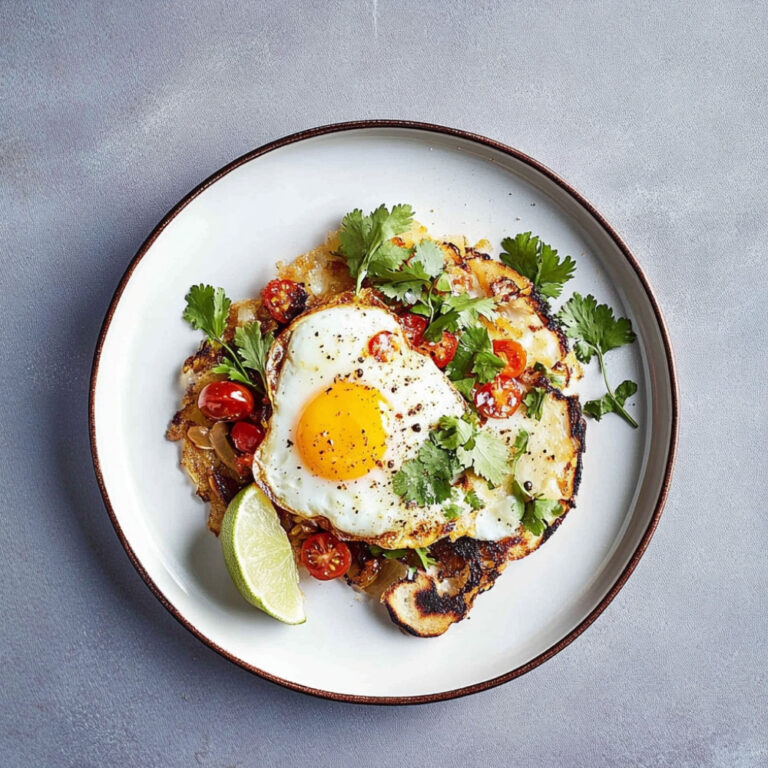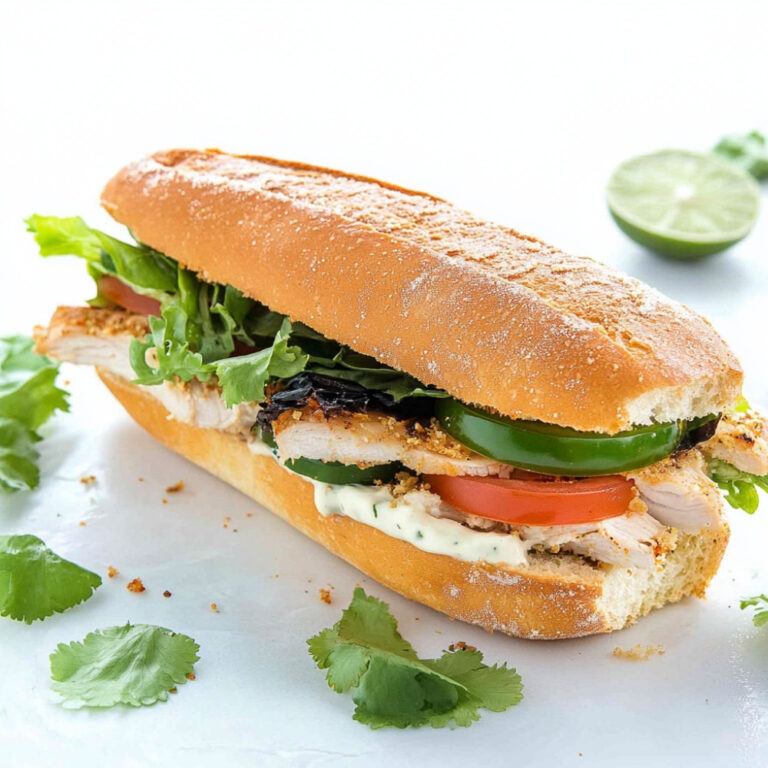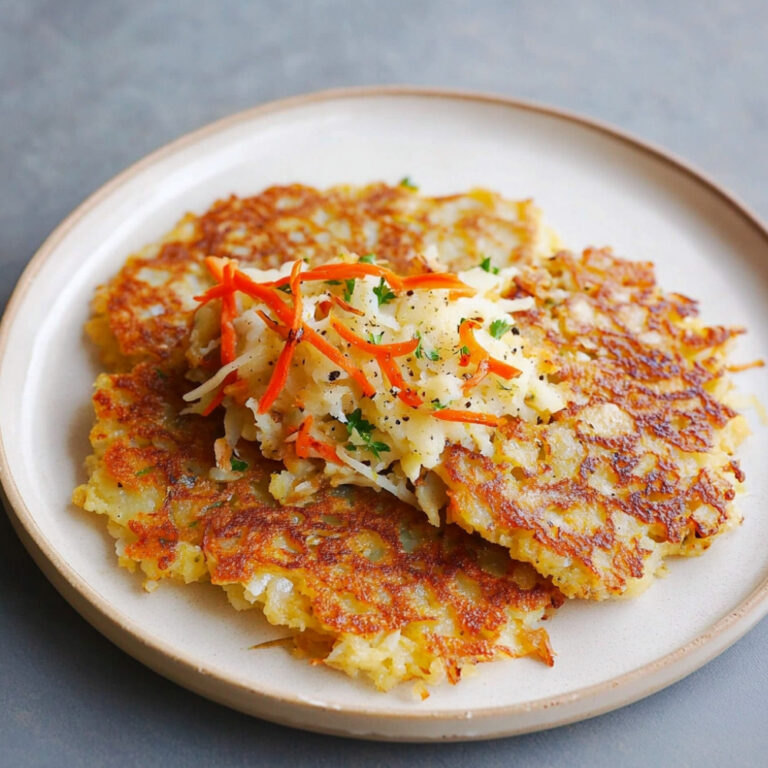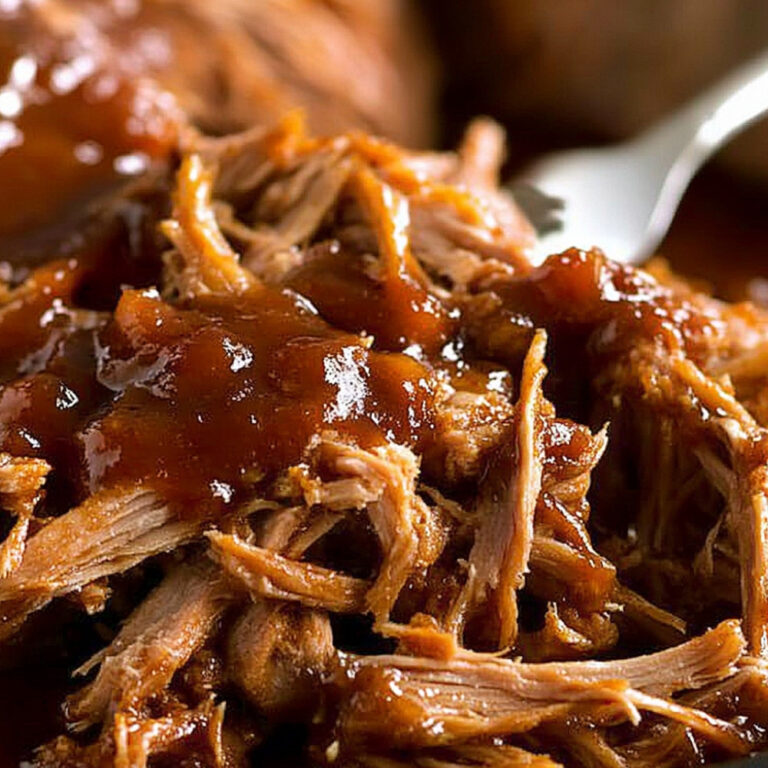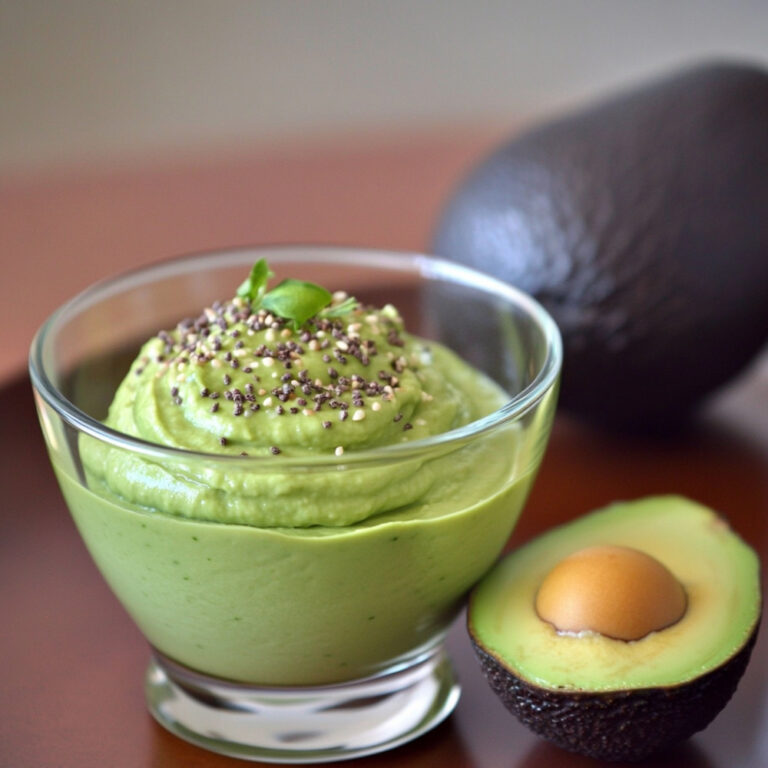Scotch Eggs
Steam still curling from the cracked yolk, crumbly breadcrumbs scattering like gold dust over my favorite old plate… there’s just something ridiculously soothing about scotch eggs. Maybe it’s the way the heat lingers in your hands as you cut one open, revealing that perfect ring of sausage around the gleaming egg inside. Rich, crisp on the outside, soft in the middle – they’re an odd kind of loveliness. I remember my mum making these on quiet Sunday mornings, humming gently over a pan of sputtering oil. It’s not fancy food, but it’s beautiful in a quiet sort of way.
Why You’ll Crave It
- That crispy, golden shell gives way to soft, rich sausage and a just-firm egg – every bite is texture heaven.
- They travel well, taste even better cold, and somehow feel like a picnic even at the kitchen table.
- Super adaptable – use your favorite sausage, slip in a few fresh herbs if you’re in the mood, or go spicy when the weather calls for it.
- Surprisingly satisfying and filling, like a full breakfast, neatly bundled in one delicious handful.
The first time I made these from scratch, I stood back and laughed – I couldn’t believe something that looked this fancy came out of my own kitchen.
What You’ll Need
- 6 large eggs: boil them just right, and let them cool in ice water – you’re going for fully cooked but still tender.
- 1 pound (450g) sausage meat: any kind you love – I usually go for herby Cumberland, but pork with fennel is lovely too.
- 1 cup (100g) breadcrumbs: the finer kind clings better, but panko can give a nice crunch if that’s what you have.
- 1/2 cup (60g) flour: for dredging – plain old all-purpose is perfect.
- 1 teaspoon salt: to season the sausage if it’s not already well-flavored.
- 1/2 teaspoon black pepper: adjust depending on your sausage – I like a bit extra.
- Oil for frying: something neutral like canola or sunflower – enough to deep fry safely.
- Parsley (optional): finely chopped, for finishing – I sprinkle some over just before serving for color and brightness.
Easy How-To
Mix the sausage
In a big bowl, crumble up the sausage meat and season it – just enough salt and pepper, maybe a pinch of nutmeg if you’re feeling it. Use your hands. It’s a bit messy but that’s how it comes together best.
Hard-boil the eggs
Lower the eggs gently into boiling water – boil for 7 to 8 minutes (not too long, or you’ll get that grey ring), then drop them into cold water to stop the cooking. Let them cool right down before peeling.
Wrap the eggs
Divide the sausage mixture into six pieces. Now, flatten one out like a rough oval in your palm, place a peeled egg in the center, and gently press the sausage around it, sealing the edges. It takes a little practice… but by egg number three you’ll be a pro.
Coat each one
Set up your breading line – flour in one bowl, a beaten egg in another, breadcrumbs in the last. Roll each wrapped egg in flour (tap off the extra), dip into the beaten egg, then roll generously in breadcrumbs. They should be nicely coated all over.
Fry ’til golden
Heat your oil to about 350°F (175°C). Gently lower in the eggs (don’t crowd the pot), and fry for 5 to 6 minutes, turning as needed, until they’re beautifully golden and crisp. Let them rest on paper towels to catch the oil.
Good to Know
- Coating falling off? Try chilling the wrapped eggs for 10 minutes before breading – it helps them hold their shape.
- If frying’s not your thing, bake them at 400°F (200°C) for 25–30 minutes. Brush with oil first so they still crisp up a little.
- You might end up with one slightly wonky-looking egg. It’s okay. That one’s yours.
Serving Ideas
- Sliced in half with mustard on the side – especially wholegrain or English mustard for that little punch.
- On a picnic plate with pickles, sharp cheddar, and a bit of fresh apple – very classic, very satisfying.
- Warm, next to a light salad of shaved fennel or arugula with lemon – the contrast is amazing.
Top Tricks
- If you love a runny yolk, boil the eggs just 6 minutes, but be super gentle wrapping them – they’re delicate little things.
- Double-dip in the breadcrumb layer for extra crunch – just repeat the egg and breadcrumb step once more.
Frequently Asked Questions
Can I bake the scotch eggs instead of frying?
Yes – and they still come out lovely. Just brush them lightly with oil and bake at a high temperature, around 400°F (200°C), for about 25–30 minutes until golden and firm.
What kind of sausage works best?
Whichever kind you like best, really. Pork with seasoning is traditional, but I sometimes use Italian sweet sausage or even chicken sausage when I want a lighter version.
How long do they keep?
Three days, in the fridge. Just reheat gently in the oven… or honestly, I sometimes eat them cold. They’re even better that way.
Can I freeze them?
For sure. I freeze them after I’ve breaded but before frying. Just lay them on a tray to freeze individually, then toss them in a freezer bag. Fry from frozen and adjust the time as needed.
Conclusion
Scotch eggs hold this lovely sort of contradiction – kind of rustic, but somehow elegant in their neat, perfect little bundles. They’re hearty and golden and satisfying in a very deep way. Once you try them homemade, you’ll see – it’s a little fussy, maybe, but in the quiet kind of way that makes you feel like you’ve done something good. For yourself, or maybe for someone else at your table.
More recipes suggestions and combination
Vegetarian Scotch Eggs
Try a base of mashed chickpeas and breadcrumbs with spices like cumin and coriander. It takes shape surprisingly well.
Spicy Scotch Eggs
Add a spoonful of harissa or chili flakes to the sausage for a vibrant, warming twist.
Cheese-Stuffed Scotch Eggs
Slip a thin ring of sharp cheddar or blue cheese between the sausage and egg – melty, savory magic.
Sweet Potato Scotch Eggs
Use mashed sweet potatoes mixed with cooked lentils and breadcrumbs for the outer layer. Earthy, sweet, and nourishing.
Herbed Scotch Eggs
A handful of chopped thyme, parsley, and chives folded into the sausage mix really lifts the flavor… especially if you’re planning to serve them cold.

